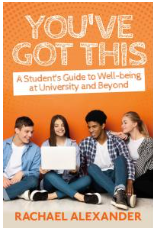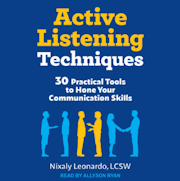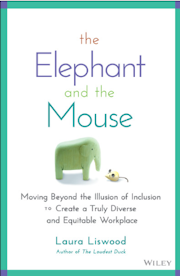Social accessibility is the theme of the Students’ Mental Health Week, celebrated this year on 8 – 14 April. Social accessibility means accepting and appreciating others as they are. A welcoming atmosphere, encouragement to participate and an open attitude are all part of social accessibility. These five books describe how each of us can contribute to an accepting and appreciative study environment.
 Alexander, R. (2022). You’ve got this : A student’s guide to well-being at university and beyond. Critical Publishing.
Alexander, R. (2022). You’ve got this : A student’s guide to well-being at university and beyond. Critical Publishing.
The key to staying stress free, enjoying your university life and achieving academic success is YOU. You alone can control your life and the way you deal with challenges, but hopefully this book will give you the support your lecturers cannot provide. Alexander covers more than a hundred topics, including homesickness, anxiety about submitting essays & attending lectures, and more. The strategies she provides help you improve both your academic and social skills, reduces stress, and think in a more positive way.
 Rosenberg, M. B. (2015). Nonviolent communication: A language of life (3rd edition.). PuddleDancer Press.
Rosenberg, M. B. (2015). Nonviolent communication: A language of life (3rd edition.). PuddleDancer Press.
Despite the title, this is not a guide on how to stop hitting people. For Rosenberg, all communication that result in hurt or harm, is violent: judging others, bullying, racial bias, blaming, finger pointing, anger.. the list is endless. According to Rosenberg, most conflicts arise from miscommunication about needs, due to coercive or violent language. Nonviolent communication seeks to increase empathy and understanding between people, and ultimately to improve the quality of life.
 Leonardo, Nixaly. (2022). Active Listening Techniques. Tantor Media. Audiobook.
Leonardo, Nixaly. (2022). Active Listening Techniques. Tantor Media. Audiobook.
Active listening requires your complete attention and engagement. Some are good at it, other may improve their skills with practice. This little audiobook will help us do just that. The thirty techniques Leonardo introduces help us learn the basics of paraphrasing, nonverbal cues, and more. The anecdotes and strategies help applying the concepts to real life. She also shows how to navigate difficult situations successfully. (Also available as an e-book.)
 Liswood, L. A. (2022). Elephant and the mouse: moving beyond the illusion of inclusion to create a truly diverse and equitable workplace. John Wiley & Sons.
Liswood, L. A. (2022). Elephant and the mouse: moving beyond the illusion of inclusion to create a truly diverse and equitable workplace. John Wiley & Sons.
In her book Liswood explores business workplace diversity, but her ideas can be applied in the higher education, as well. The elephant and the mouse refer to the majority and minority groups that exist in all organizations, each living in their own bubbles. Liswood’s ideas help move beyond DEI projects towards truly embracing the differences between people. (Also available as an audiobook.)
 Torres, V., Arminio, J., & Pope, R. L. (2012). Why aren’t we there yet? Taking personal responsibility for creating an inclusive campus. Stylus Publishing.
Torres, V., Arminio, J., & Pope, R. L. (2012). Why aren’t we there yet? Taking personal responsibility for creating an inclusive campus. Stylus Publishing.
The authors of this book challenge higher education administrators, educators, and support staff to do more for our campuses. Though written for the American audience and as early as in 2012, many of the ideas are valid in Finland today. The book advocates for engaging in difficult conversations, which create change and help build a more inclusive environment for students to learn, grow and thrive.
Thank you for the image: NoName_13@Pixabay



